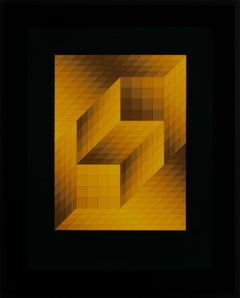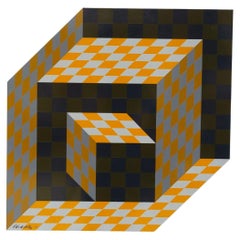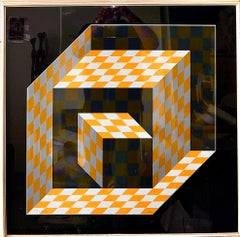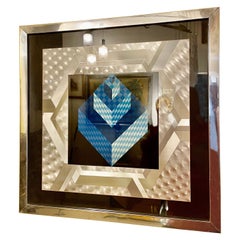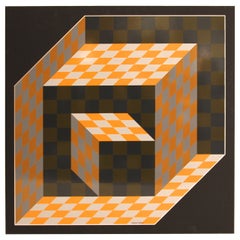Vasarely Axo
1970s Op Art Abstract Prints
Screen, Paper
Vintage 1970s French Post-Modern Wall-mounted Sculptures
Aluminum
1970s Op Art Abstract Paintings
Metal, Enamel
Recent Sales
Vintage 1970s French Post-Modern Prints
Paper
Vintage 1970s Hungarian Mid-Century Modern Painted Furniture
Aluminum
1960s Abstract Geometric Abstract Sculptures
Wood, Acrylic
1970s Op Art Abstract Paintings
Metal, Enamel
20th Century American Sculptures
Vintage 1970s Unknown Mid-Century Modern Contemporary Art
Aluminum
1970s Op Art Abstract Prints
Screen
People Also Browsed
21st Century and Contemporary Swedish Mid-Century Modern Table Lamps
Textile
21st Century and Contemporary Mexican Mid-Century Modern Floor Lamps
Textile, Wood, Linen, Fiberglass
Antique 19th Century French Directoire Commodes and Chests of Drawers
Brass
1970s Kinetic Abstract Prints
Screen
2010s Ceramics
Stoneware
21st Century and Contemporary American Art Nouveau Doors and Gates
2010s Italian Modern Table Lamps
Murano Glass
Antique Late 19th Century Italian Louis XV Sofas
Gold, Gold Leaf
2010s Indian Organic Modern Animal Sculptures
Nickel
Vintage 1950s Danish Wingback Chairs
Wool, Ash
2010s Realist Landscape Paintings
Oil, Canvas
Vintage 1950s Table Lamps
Metal
21st Century and Contemporary Italian Modern Chandeliers and Pendants
Aluminum
21st Century and Contemporary Italian Wall Mirrors
Glass, Mirror, Murano Glass
Vintage 1960s Italian Mid-Century Modern Chandeliers and Pendants
Brass, Steel
Vintage 1970s Italian Barware
Metal
Victor Vasarely for sale on 1stDibs
Widely considered the grandfather of Op art, the French-Hungarian painter Victor Vasarely (1906–97) created eye-popping geometric abstractions that play with the viewer’s perception of depth, perspective and motion. A classic example is the 1937 Zebra, which consists of undulating black and white stripes that suggest the form of the titular animal through optical trickery. The work is often credited as the earliest Op art painting.
Such illusions were more than pleasing tricks for Vasarely, who insisted that “pure form and pure color can signify the world.” He wanted to “democratize” art by producing works in large editions at reasonable prices that were understandable across national and cultural boundaries. In the 1960s, he developed an alphabet plastique, or fine art alphabet, consisting of elementary visual building blocks that could be used in endless combinations to create original compositions. By employing this universal visual vocabulary and stripping away topical references, he sought to create what he called a “Planetary Folklore.”
Embodying Vasarely’s singular belief that art should serve a social function, accessible to all, these innovations may perhaps be his greatest contribution to 20th-century art.
Find a collection of Victor Vasarely prints, paintings, sculptures and other art on 1stDibs.
